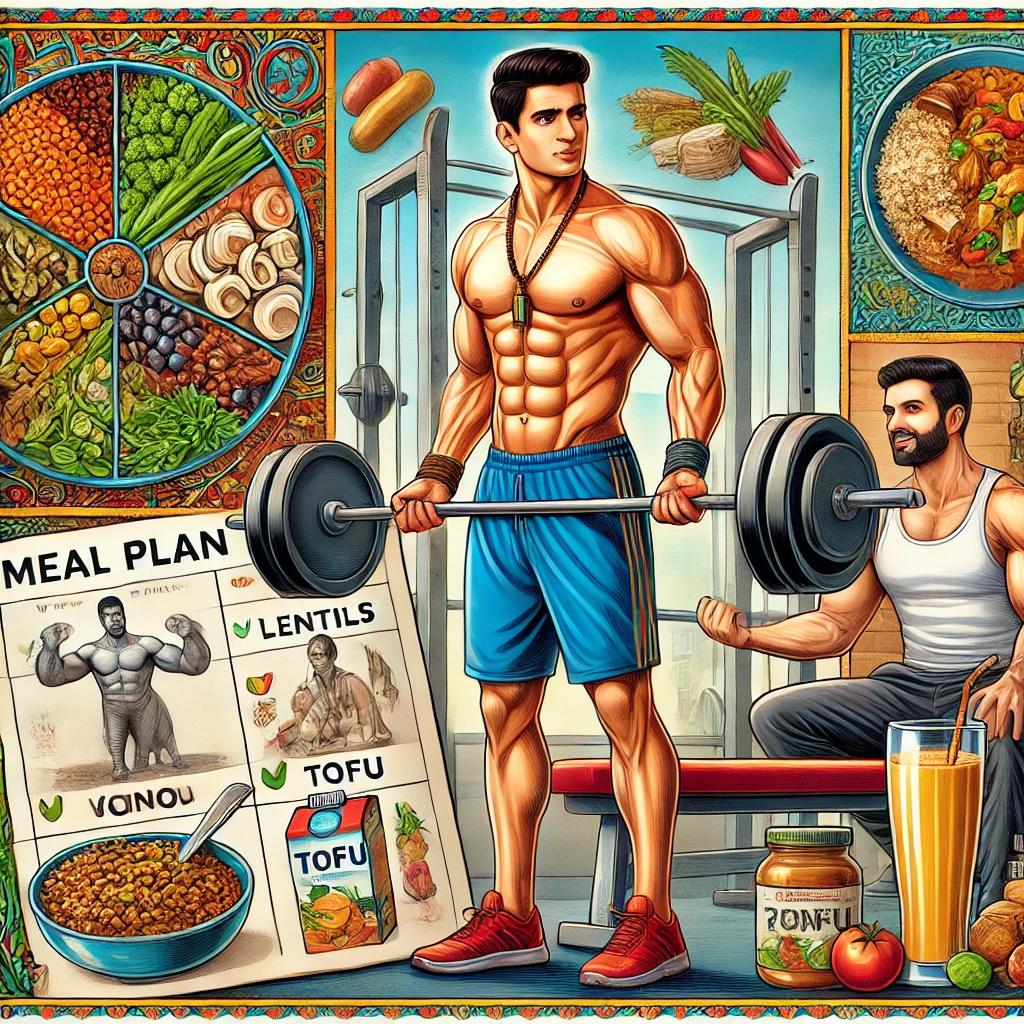Sukhan Kakkar/ TNF
Rahul was a 25-year-old vegetarian who loved fitness but always felt weak compared to his gym friends. They ate chicken, eggs, and fish, while Rahul stuck to his favorite vegetarian dishes like dal, paneer, and sabzi. One day, his gym trainer, Akash, noticed Rahul’s concern.
“Rahul, do you think vegetarians can’t build muscles?” Akash asked with a smile.
Rahul hesitated. “I’m not sure. Everyone says you need meat to grow strong.”
“That’s a myth,” Akash said firmly. “Muscles grow when you give them enough protein, proper exercise, and rest. Being vegetarian isn’t a problem. Let me guide you.”
Step 1: Understanding Protein Sources
Akash explained that protein is the building block for muscles. “You don’t need meat to get protein. Let’s look at vegetarian sources,” he said.
Rahul learned about foods like lentils (dal), chickpeas, kidney beans, and soy. Akash also introduced him to quinoa, a grain packed with protein. Rahul was excited to try tofu and tempeh, made from soybeans. Akash also suggested dairy products like milk, curd, and paneer for protein.
“And don’t forget nuts and seeds,” Akash added. “Almonds, walnuts, chia seeds, and flaxseeds are your friends.”
Rahul was surprised. “Wow, I didn’t know there were so many options!”
Step 2: Building a Balanced Diet
Akash helped Rahul create a meal plan. Breakfast included a smoothie with milk, bananas, peanut butter, and chia seeds. Lunch was packed with dal, roti, sabzi, and a quinoa salad. Dinner had stir-fried tofu or paneer with vegetables and rice. Snacks included roasted chickpeas, nuts, and fruit.
Rahul also discovered protein supplements made from plants like peas and brown rice. Akash explained, “These are great for busy days when you can’t cook. But focus on real food first.”
Step 3: Smart Workouts
“You can’t build muscles without training,” Akash reminded Rahul.
Rahul started lifting weights three times a week. Akash made sure he followed the right form to avoid injuries. They focused on compound exercises like squats, deadlifts, and bench presses, which work multiple muscles at once.
“After every workout, eat something high in protein within 30 minutes,” Akash advised. Rahul loved having a glass of chocolate milk or a protein shake after gym sessions.
Step 4: Rest and Recovery
Rahul was so motivated that he wanted to work out every day. But Akash stopped him. “Muscles grow when you rest,” he said.
Rahul learned to sleep at least 7-8 hours a night and take one or two rest days a week. He also added yoga to relax his mind and body.
The Results
After three months of following Akash’s advice, Rahul noticed big changes. His arms looked stronger, his chest was broader, and he felt more energetic. At the gym, people started asking him for tips.
“Rahul, what’s your secret?” one friend asked.
Rahul smiled and said, “It’s not about eating meat. It’s about eating smart, training hard, and resting well. If I can do it as a vegetarian, anyone can!”
Rahul’s Key Takeaways
1. Protein is essential: Vegetarians can get protein from lentils, beans, soy, dairy, nuts, and seeds.
2. Meal planning matters: A balanced diet with enough calories supports muscle growth.
3. Exercise regularly: Focus on strength training with proper form.
4. Recovery is important: Sleep and rest allow muscles to repair and grow.
Rahul’s story proved that being a vegetarian was not a barrier to building muscles. It’s all about consistency and the right approach. Now, Rahul inspires others to stay fit while sticking to their beliefs.
Would you like to start your own muscle-building journey like Rahul? Take the first step today!









